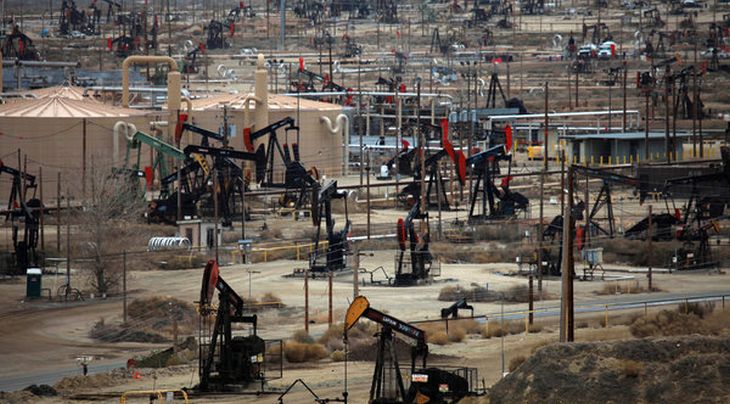U.S. shale oil production will drop 9 percent next year as a crude price below $50 a barrel “slams brakes” on years of supply growth, the International Energy Agency said.
“Oil’s downward spiral to fresh six-year lows below $50 a barrel has dimmed the prospects for a recovery in U.S. drilling activity,” the Paris-based IEA said in its monthly market report Friday. Unless oil prices “bounce back in coming months,” supply is forecast to fall by 385,000 barrels a day next year to 3.9 million barrels a day, Bloomberg reports.
The forecast is a turnaround for the IEA, which only two months ago predicted U.S. shale oil output would increase by 60,000 barrels a day in 2016. Oil supply from producers outside OPEC will make the biggest contraction next year since 1992 as Saudi Arabia’s strategy to defend market share by pressuring rivals with lower prices takes effect, according to the report.
Drilling activity and output levels are unlikely to rebound following the cuts in oil producers’ capital spending, the agency said. The number of oil rigs active in the U.S. has fallen by almost 60 percent over the past year, standing at 662 in the week to Sept. 4, according to Baker Hughes Inc.
This has translated into five weeks of declines in U.S. production, the longest retreat in almost 11 years. Total output currently stands at 9.13 million barrels a day, a 5 percent drop from the all-time high of 9.61 million reached on June 5, according to Department of Energy data.
Declining Flows
Continuous investment is needed for production to keep flowing from U.S. shale oil wells, which have “steep decline rates,” the IEA said. Output per well tends to decline by an average of 72 percent from initial production rates within 12 months of the well having started, forcing operators to keep drilling to offset the decline.
U.S. shale oil producers may have to contend with a funding squeeze from capital markets that’s seen impacting their ability to drill, Citigroup Inc. said earlier this week. The U.S. bank estimates as much as half a million barrels a day may be cut by year-end.
U.S. output will need to decline by 585,000 barrels a day next year and other non-OPEC production will need to fall by 220,000 barrels a day for the global surplus to end by the fourth quarter of 2016, Goldman Sachs Group Inc. said in a report Friday.
“We continue to view U.S. shale as the likely near-term source of supply adjustment,” according to the bank, which said the global surplus in oil has the potential to drive prices to as low as $20 a barrel.
